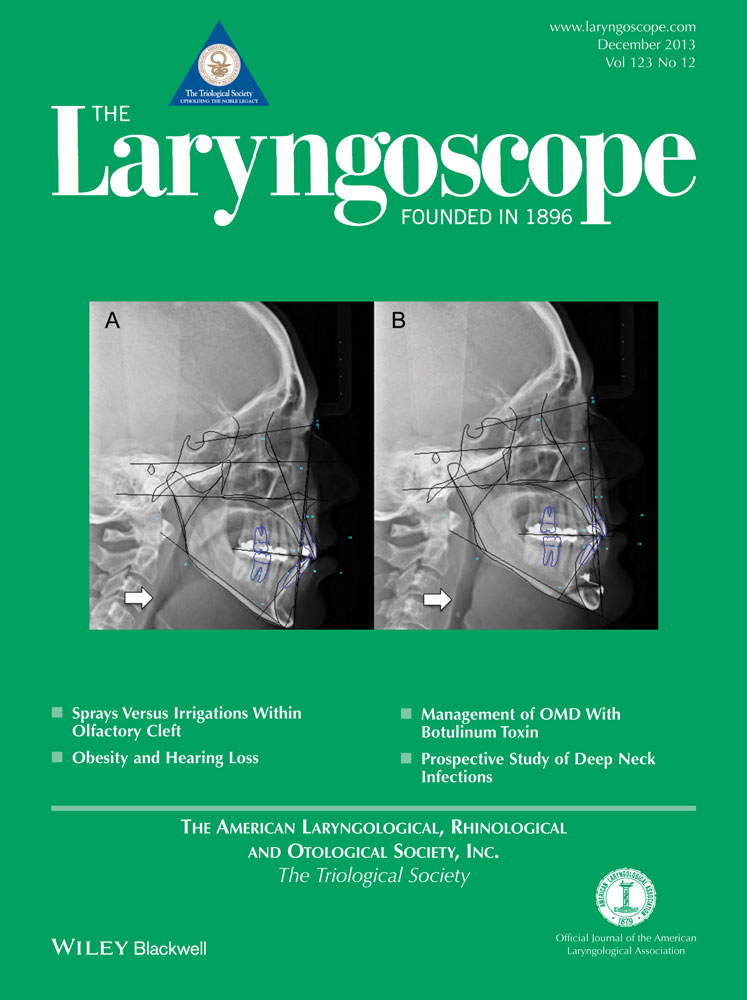Tympanoplasty with intact canal wall mastoidectomy for cholesteatoma: Long-term hearing outcomes
The authors have no funding, financial relationships, or conflicts of interest to disclose.
Abstract
Objectives/Hypothesis
To review long-term hearing results after intact canal wall mastoidectomy with tympanoplasty for treatment of cholesteatoma and to identify factors associated with improved hearing outcomes.
Study Design
A retrospective analysis of all cases of cholesteatoma treated with intact canal wall mastoidectomy at a single institution by the senior author over a period of 9 years, for which at least 2 years of follow-up data exist.
Methods
Patient and disease information was collected retrospectively and analyzed.
Results
There were 148 patients with 156 affected ears treated and followed for a median of 5.3 years (interquartile range, 3.6–7.4 years). The majority of the operations (144/156, 92%) were staged. Hearing data were available for 150 ears. The overall postoperative mean air-bone gap was ≤20 dB in 64% of patients. This was maintained long term in most patients, with 59% of patients still with an air-bone gap ≤20 dB at a median follow-up of 5.3 years. The presence of an intact stapes did not affect initial hearing outcomes, but the group with an intact stapes had improved long-term hearing results compared to those without an intact stapes (71% vs. 42% air-bone gap ≤20 dB, P < .001). The presence of a malleus handle also led to superior long-term hearing outcomes (72% vs. 48% air-bone gap ≤20 dB, P = .005).
Conclusions
Long-term hearing results from intact canal wall mastoidectomy with tympanoplasty are excellent, with the majority of patients maintaining a small air-bone gap long term. The presence of a stapes and/or malleus handle confers improved long-term hearing outcomes.
Level of Evidence
4. Laryngoscope, 123:3168–3171, 2013




